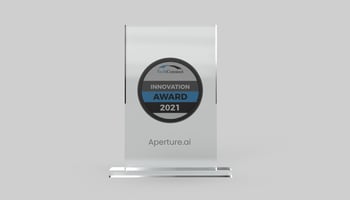Please join Aperture for an upcoming webinar on Early-stage Ideation and Rapid Opportunity...
Bioprinting and the path to end organ transplant waiting lists
Imagine an end to human organ transplant waitlists and a world where the testing of chemical and pharmaceutical products on animals no longer exists. No, we are not there yet, and it is unlikely that we will be anytime soon, but these are two realistic goals in the growing field of three-dimensional (3D) bioprinting or the creation of living synthetic tissues via additive manufacturing technologies. Despite major current technological obstacles, numerous researchers and companies are working to solve complicated problems that can save countless lives.
Bioprinting is a form of 3D printing that uses a digital file as a map to additively manufacture living tissue and organs. The print media consists of bioinks, which are a mixture of living cells and biomaterials to support cell growth. Most bioprinters create a dissolvable gel or collagen support scaffold, then the bioinks are precisely deposited using specialized printers and printing heads.
Forming and maintaining the cell-carrying three-dimensional scaffolds, also referred to as printability, remains a critical challenge needing process, material, and equipment improvements. For example, it currently takes up to eight labor-intensive weeks just to create a personalized scaffold for a patient’s bladder cells to grow on. And while eight weeks might not seem long to some, that does not include the subsequent period needed for organ growth in a bioreactor.
Cell viability is a second major challenge in bioprinting and relates to the number of cells that survive printing and incubation. Improvements have enabled cell viability rates to reach up to 95% seven days after printing in research settings. However, this is likely to remain a persistent challenge as the technology is used to generate intricate tissue types and it is commercially scaled.
From a bioprinting equipment perspective, adequate printing resolution with functional bioinks remains a challenge. Although bioprinting is currently used to create living tissue for research purposes, most experts agree that the technology remains years away from producing operational, complex human organs.

Despite the nature of these complex problems, advancements are being made at the material, process, and equipment levels. Recently, a team at Utrecht University printed working liver units in less than twenty seconds using ultrafast volumetric bioprinting. Furthermore, a joint team from Harvard and Sichuan Universities used a new cryo-bioprinting process to fabricate live human tendon tissue. On the equipment side, novel bioinks with higher cell viability and the capability of bioprinting 4D structures have emerged, and innovative approaches for higher-level bioprinting resolution currently exist.
Bioprinting is a technology that can benefit society as a whole and transform the organ donation process. In the United States, about 6,000 people on transplant waiting lists in 2020 died waiting for an available donor. With the worldwide organ transplantation market expected to exceed $60 billion by 2027, bioprinting innovators and innovations can save lives and revolutionize this vital sector of the healthcare industry.
This is the second article in our series of “highlighted problems,” which have been surfaced using Aperture’s opportunity discovery platform. It is an example of a solvable multifaceted problem with the right blend of technology and innovation. Stay tuned for more interesting problems in this series.
-2-1.png?width=303&height=100&name=Aperture_Logo_Black(large)-2-1.png)
.png?height=200&name=ISBM%20Webinar%20Blog%20Banner%20(2).png)

